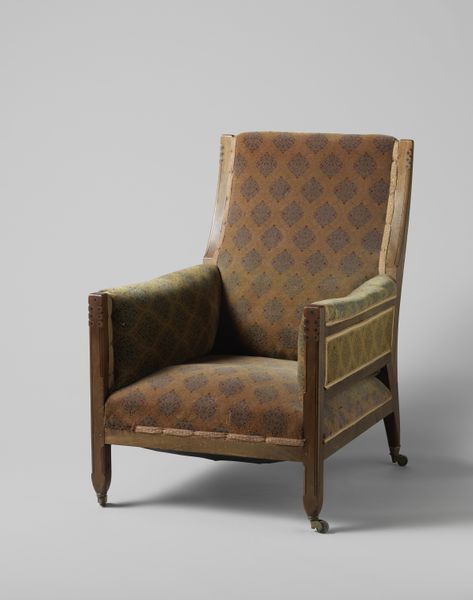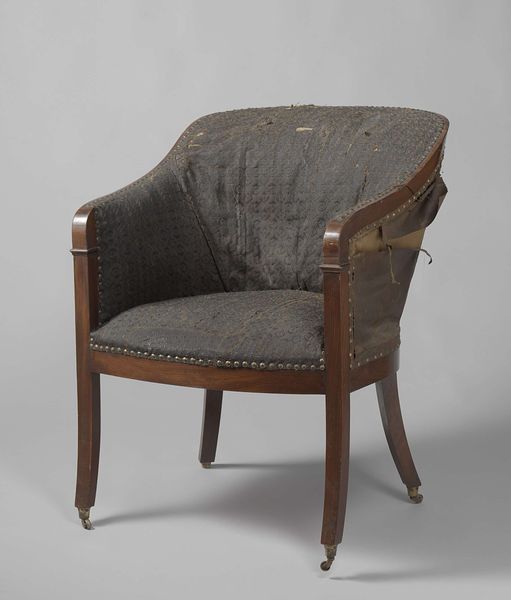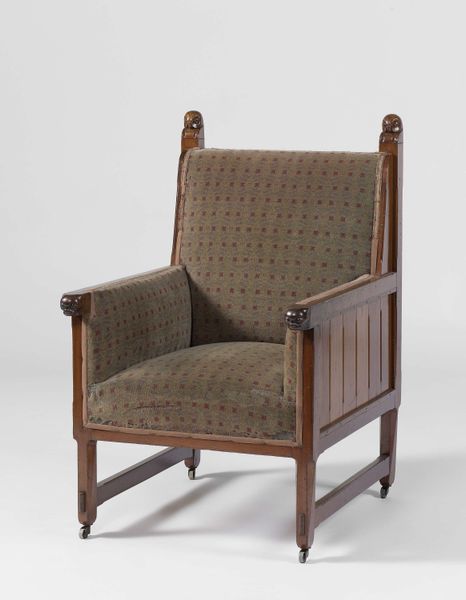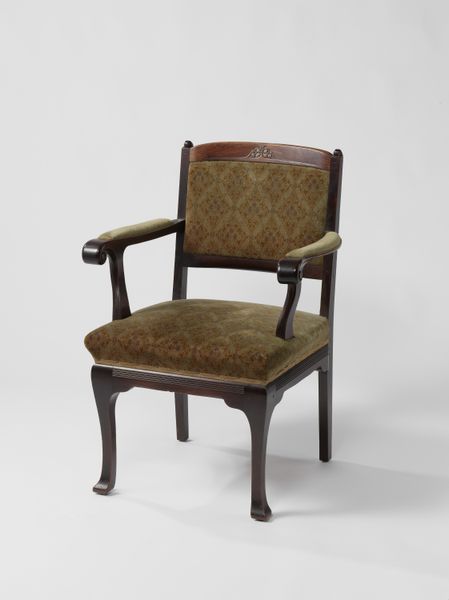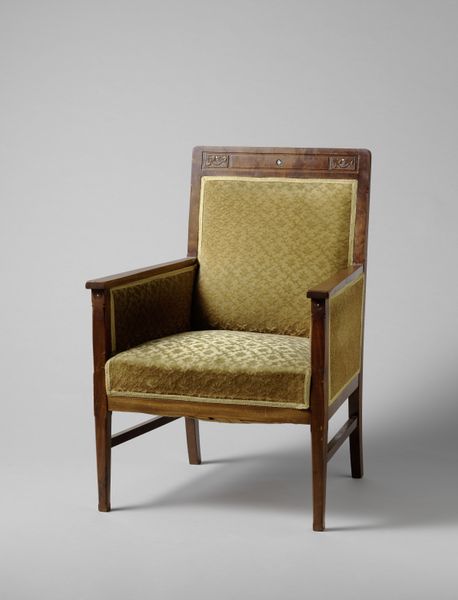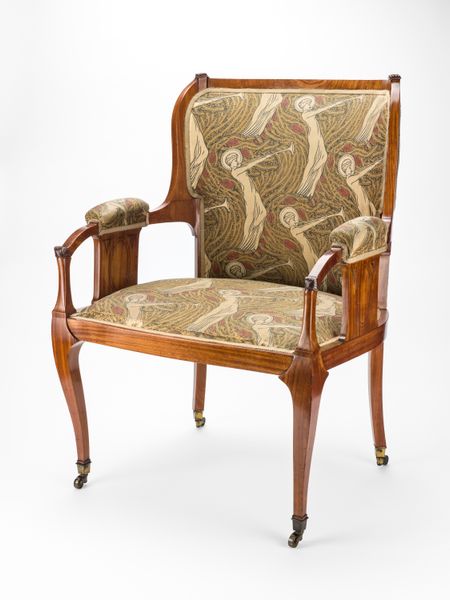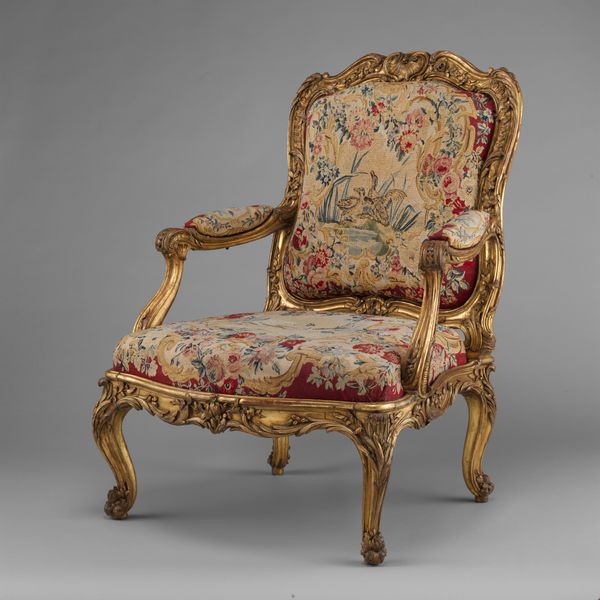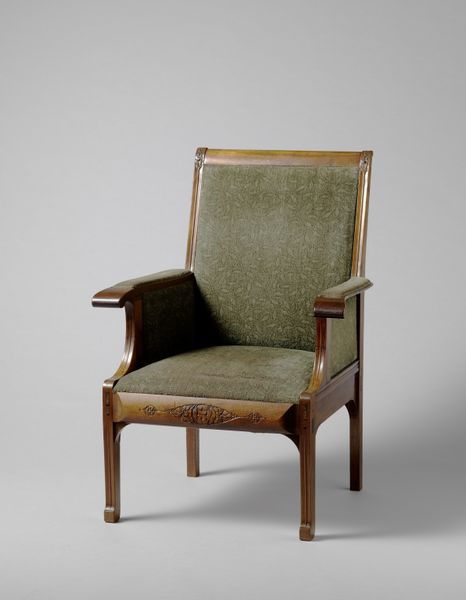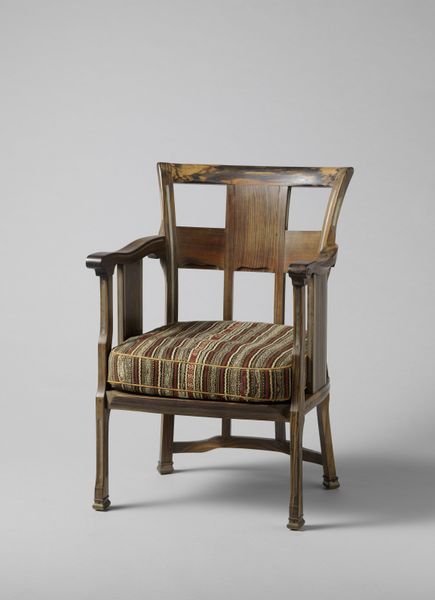
wood
#
geometric pattern
#
wood
#
decorative-art
Dimensions: 46 3/8 x 32 3/8 x 25 7/8 in. (117.8 x 82.2 x 65.7 cm)
Copyright: Public Domain
Curator: This remarkable object is an "Easy Chair," dating back to 1758. You can find this striking piece at the Metropolitan Museum of Art here in New York. It's an example of mixed media with a focus on wood construction. Editor: Immediately, the pattern jumps out. It’s so vibrant, almost unexpectedly modern for its age. There is a playfulness here, despite what seems like a rigid geometric pattern at first. Curator: Indeed, the geometry tells an interesting story. The chair’s design reflects the rise of mercantile culture in the 18th century. It showcases how decorative arts could integrate and reinterpret global visual motifs within the domestic sphere. What you see are not just abstract shapes, but subtle appropriations of styles brought in by trade from various cultures. The domestic space itself becomes a site of both comfort and colonial influence. Editor: I see what you mean. Each of those small, repeated shapes feel like stylized flower petals—which, in this context, suggest something larger than surface decoration. A hidden symbolism relating to growth, domesticity and, potentially, women’s role in this colonial narrative. It becomes a stage for more intimate conversations. Curator: Precisely! The "easy chair" was developed as a comfortable, private seat, mainly for women managing the household. Its comfort afforded space for letter writing or accounting tasks while seated, managing enslaved workers, or taking tea. That the aesthetic feels contemporary reminds us how aesthetics often echo existing forms of power. Editor: The piece makes me think of tapestries; I wonder what stories a close inspection of the fabric’s symbols might uncover. How a comfortable and attractive seat for one means discomfort and unfreedom for others. It reminds us to always consider how images gain emotional meaning over time. Curator: An apt observation. The piece functions as a reminder of intertwined histories, simultaneously offering solace and embodying legacies of inequality. Editor: It makes you consider who actually found this chair “easy.”
Comments
No comments
Be the first to comment and join the conversation on the ultimate creative platform.
